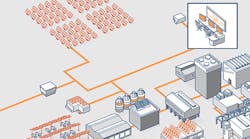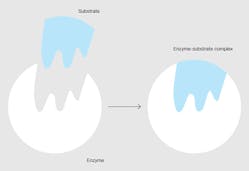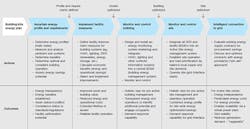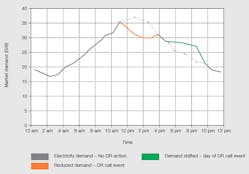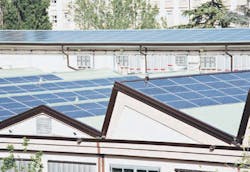Decentralized generation using renewable technologies has opened new possibilities for industrial sites to control their energy assets locally. Advantages include energy efficiency, ensuring power stability and quality as well as interfacing with the external power grid in a beneficial manner. This more or less independent energy model is referred to loosely as a "microgrid." Multiple definitions of this term are used in industry and academia, but ABB has defined it as follows: "A microgrid is an integrated energy system consisting of distributed energy resources and multiple electrical loads operating as a single, autonomous grid either in parallel to or ‘islanded’ from the existing utility power grid."
A microgrid includes generation, a distribution system, consumption and storage, and manages them with advanced monitoring, control and automation systems.1
Microgrids are basically smaller versions of the traditional power grid. Types of microgrids include:
- Isolated autonomous microgrids, found for example on islands with no connection to the main grid.
- Weakly connected microgrids can be found at the ends of the lines of larger traditional power grids, or in facilities that can go "off-grid" when desired.
- Semi-autonomous microgrids, located in remote mainlaind locations such as remote communities, research stations, defense bases and industrial sites.
All microgrids have total power ratings between 100 kW and 50 MW.
Active Site
ABB's term, Active Site, has its origin in biology, where an active site is the small portion of an enzyme to which substrate molecules bind to undergo a chemical reaction. The reaction can only occur when a substrate collides with and slots into its unique and matching active site ➔ 1.
In the context of connectivity of microgrid sites, ABB uses the term Active Site to describe the "technology substrate" that bonds a site (ie, the substrate) to the macrogrid (ie, the enzyme) thereby permitting the site to operate as a semi-autonomous microgrid. An Active Site optimizes the deployment of on-site (renewable) generation and storage, sitewide monitoring and controlling and communication with the power grid.
ABB's Active Site technology will be targeted at facility microgrids that, for example, can be found on industrial sites, university campuses and military complexes. These microgrids are connected to but can be managed independently of the macrogrid. Distribution microgrids, which are a part of the power provider/ utility network of meshed grids, may be handled differently and are not considered in this article. The technology's applicability, however, does merit further evaluation.
An Active Site enables the site's owner or operator to move from a passive to an active role by efficiently employing state-of-the-art technology via an advanced monitoring and control system; it provides a mutually beneficial relationship with the smart grid, specifically:
- Increasing overall site energy efficiency while at the same time reducing power grid line losses by sizing and locating the generation adjacent to the site demand.
- Providing localized energy generation and storage to seamlessly operate in an autonomous fashion, balancing out voltage and frequency while prioritizing supply for critical loads.
- Ensuring grid stability via control approaches based on frequency drops and voltage levels at the terminal of each device (ie, reducing bottlenecks).
- Enabling scalability by facilitating the use of many small generation, storage and load devices in a parallel and modular manner to scale up to higher power production and/or consumption levels.
- Promoting both energy autonomy and accountability to provide sustainable benefits to the local community (ie, reduced carbon footprint, green power, etc).
- Identifying predictable and lower energy costs to allow economic decision-making to be programmed into standard operating protocols.
- Reducing the need for capital expenditures for new central power generating plants and improving the overall grid network efficiency (ie, energy avoided/saved or "negawatts")
- Encouraging innovative solutions that allow for new business models in a dynamic power market.
Rolling out an Active Site
The creation of an Active Site is not something that can be accomplished overnight. It is a process requiring a stepwise approach. ABB uses a process framework ➔ 2 to collaborate with its customers and its channel partners in a systematic fashion.
The first and most important step is to meter for a distinct period all energy mediums: electricity, natural gas, steam, water, petrol, etc. both on a macro (main meter) and micro (system/asset) level. This will ascertain the building's energy profile and help understand the operational aspects of the building and overall site energy requirements.
Once this data is acquired and analyzed, facility improvement measures can be evaluated, selected, designed and implemented based on the owner's building/ site energy plan in order to match the expected economic benefits and returns. These measures may include building automation (HVAC2), lighting, etc.), industrial automation, distributed energy resources (DER) such as solar, wind, combined heat and power (CHP), and energy storage and electrical vehicle charging. This process will most likely require a few iterations based on the energy plan's budget and timing.
After the implementation of the improvement measures, the monitoring and control phase begins. This not only verifies the results versus the target, but also identifies additional improvements and/or operational issues. Integration of the different building and process control systems and the pertinent information systems (eg, maintenance management) may also be necessary for a holistic overview. As soon as all buildings are optimized and aligned to the site generation and storage capacity, an Active Site energy management system is used to integrate all of these systems and thus to better monitor and control the site. All of the site's operational parameters (ie, system/ load prioritization and requirements) can be monitored and controlled together with the energy storage and production parameters (electrical and thermal) permitting compensation for demand or supply fluctuations across the entire site, whether these fluctuations are scheduled, requested or unexpected. For example, when demand is too high, the system can switch off non-critical loads in lighting, HVAC systems and ancillary equipment (eg, pumps, fans) and utilize the most cost effective site generation and storage.
Now that the site has become an Active Site, an intelligent connection to the grid is possible and the site can become an active participant in the overall macrogrid. The interconnection and communicational aspects between the site and the energy provider for all modes of operation ie, transfer to islanding mode, site reconnection to the power grid, energy storage recharge mode, and step-down of site generation upon reconnection to the grid needs to be agreed upon with the energy provider. This is a matter of regulation, standardization and contractual agreement. Overall, the benefits to the site owner are the predictable and optimized energy costs. The benefit to the energy supplier is scalability for that region, as an Active Site can participate in the virtual power plant (VPP) model, which contributes to both a stable grid and reduces centralized generation demand (ie, negawatts).
Overall, an Active Site contributes to the management of the macrogrid by predictively and dynamically participating in its overall demand needs. By being able to predict the site’s capabilities through analysis, simulation and planning, the site becomes an active player supporting the ever changing needs of the macrogrid.
In a more isolated approach, an Active Site can also be beneficial to the macrogrid by controlling the overall site demand by employing demand reduction/ shifting and energy storage usage at the appropriate times. An example can be seen in ➔ 3: When the peak demand reaches 35, the demand is reduced (or shifted to a later period) and thus a peak energy (and cost) reduction is achieved.
On the other hand, when it becomes more advantageous, the loads which were shifted can be energized to perform their original tasks (or, in some cases store energy to be curtailed during peak demand).
For what type of applications would an Active Site offer the greatest advantages? Simply put, the answer is a site whose owners attach high value to:
- Access to reliable, secure power (energy security)
- Control over their energy supply and demand (energy independence)
- Cost savings, both energy and operational (energy efficiency)
- Cost benefits by playing an active role on the energy market
From a market perspective, there are industrial sites such as chemical plants with significant energy demand where dedicated systems are already being deployed or integrated as part of a complete control system. But industrial sites, such as food and beverage, paper and printing, electrical/electronic manufacturers, vehicle construction, etc. that have a diverse range of functional buildings (ie, process, office, warehousing, logistics, etc.) are ideal candidates.
In Germany, for example, there are a significant number of sites having an ideal “Active Site energy consumption,” which ranges between 2 and 20 GWh/year and the electrical part of the energy consumption ideally being above 50 percent. It is estimated that there are 24,000 sites in this category ➔ 4.
With the technology, market needs and all of the benefits presented herein, there is nothing standing in the way of site owners to begin an Active Site process, either independently or jointly with their energy providers. ABB is ready and able to accompany this process. The company welcomes inquiries and feedback and hopes to hear from interested candidates soon.
Philip Juneau
ABB Low Voltage Products, Building Automation
Zurich, Switzerland
[email protected]
Dirk John
ABB Corporate Research, Building Automation
Ladenburg, Germany
[email protected]
-----------------------
Footnotes
- See also the article on microgrids on pages 54–60 of this edition of ABB Review.
- HVAC: heating, ventilation and air conditioning.
